Celebrate the Caribbean Endemic Bird Festival (CEBF) with us! Our theme in 2023 is “Water: Sustaining Bird Life” highlighting the importance of water conservation to both humans and birds. Have fun learning about a new endemic bird every day. We have colouring pages, puzzles, activities, and more. Download for free and enjoy nature with your family at home.
Endemic Bird of the Day: Flat-billed Vireo
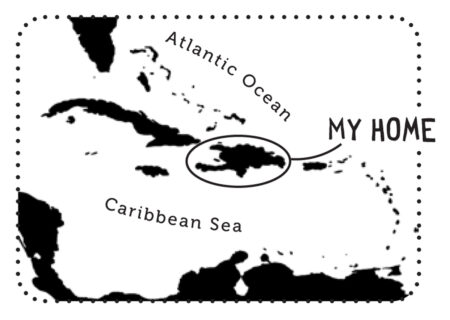 There seems to be no braver small bird than the Flat-billed Vireo (Vireo nanus). It is highly territorial and will respond to any potential intruder, no matter the size, with acute shaking of its body and a harsh scolding note.
There seems to be no braver small bird than the Flat-billed Vireo (Vireo nanus). It is highly territorial and will respond to any potential intruder, no matter the size, with acute shaking of its body and a harsh scolding note.
The Flat-billed Vireo is endemic to the island of Hispaniola and is locally distributed in both the Dominican Republic and Haiti. It is a grayish-green bird with duller, yellow-washed underparts, two bold white wing bars, and whitish eyes. It has a noticeably wide, flattened, and triangular dark gray bill.
Although the plumage is rather plain it has a very cheerful, whistling song “wi-wi-wi-wi-wi,” and a more rapid chattering “weet-weet-weet…” Like other vireos they are more often heard than seen, unless you lure it out of the dense vegetation by imitating its call.
It is a bird of dense lowland scrubby habitats— usually the thick underbrush in a dry forest on limestone floor. For this reason the Flat-billed Vireo belongs to a particular group of vireos called the “scrub vireos.” But it has also been recorded at 1,200m above sea level. It is usually seen moving low above the ground foraging for small fruits and insects; sometimes, the species even descends to the ground to feed. The Flat-billed Vireo will also catch flying insects out of the air.
This could explain an old debate, which argued that this vireo was actually a flycatcher, and should be placed in the genus Empidonax. Later on, it was finally placed in the vireo family in the genus Vireo. Like the common name implies, its peculiar flattened, broad-based bill confused ornithologists for quite some time. The specific name “nanus” depicts its already mentioned small size (dwarf).
The breeding season runs from February to June. The female lays two white, unmarked or with light gray markings at blunt end, eggs in a cup shaped nest. Nest is made of plant fibers and sometimes horsehair.
The local name “Cigüita Juliana,” as Annabelle Dod called it in the first book on the birds of the Dominican Republic (first ever written in Spanish), links its relationship with the other resident (and well known) vireo, the “Julián Chiví” (Black-whiskered Vireo), which actually has a truly onomatopoeic name.
The Flat-billed Vireo is not globally threatened but has suffered considerable loss of habitat in recent times. It is uncommon and local in its distribution. It is up to us to protect its remaining habitat by volunteering and/or donating to reforestation projects led by local environmental NGOs on Hispaniola. Learn more about this species, including its range, photos, and calls here.
Thanks to Miguel Landestoy for the text!
Colour in the Flat-billed Vireo
Download our West Indies Endemic Bird colouring page. Use the photos below as your guide, or you can look up pictures of the bird online or in a bird field guide if you have one. Share your coloured-in page with us by posting it online and tagging us @BirdsCaribbean #CEBFfromthenest
Listen to the song of Flat-billed Vireo
The song of the Flat-billed Vireo is a cheerful repeated whistle, almost liquid-like in quality, “we-we-we-we-we…”
Puzzle of the Day
Click on the image below to do the puzzle. You can make the puzzle as easy or as hard as you like – for example, 6, 8, or 12 pieces for young children, all the way up to 1,024 pieces for those that are up for a challenge!
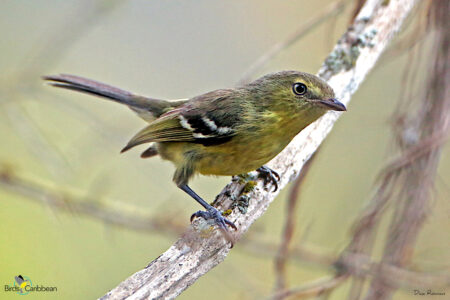
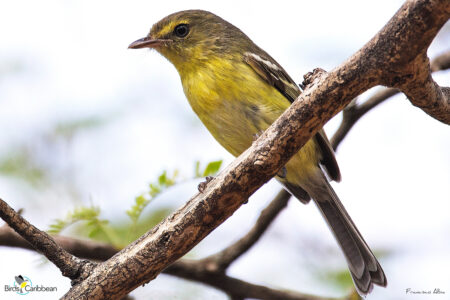
Activity of the Day
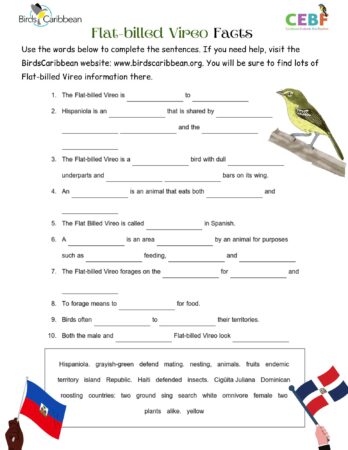 FOR KIDS: What facts can you remember about today’s endemic bird – the Flat-billed Vireo? Test your knowledge by filling in the missing words in our Flat-billed Vireo facts! We have given you all the correct words to use but can you put them into the right fact?
FOR KIDS: What facts can you remember about today’s endemic bird – the Flat-billed Vireo? Test your knowledge by filling in the missing words in our Flat-billed Vireo facts! We have given you all the correct words to use but can you put them into the right fact?
You can re-read the information all about this bird above, or search on the BirdsCaribbean webpages or online for more information about the Flat-billed Vireo! Then, when you have completed all the sentences, you can check your answers here.
FOR KIDS AND ADULTS: Enjoy this video of a Flat-billed Vireo in the wild! In this video you can see the Vireo perched high in a tree and you can also hear its song.

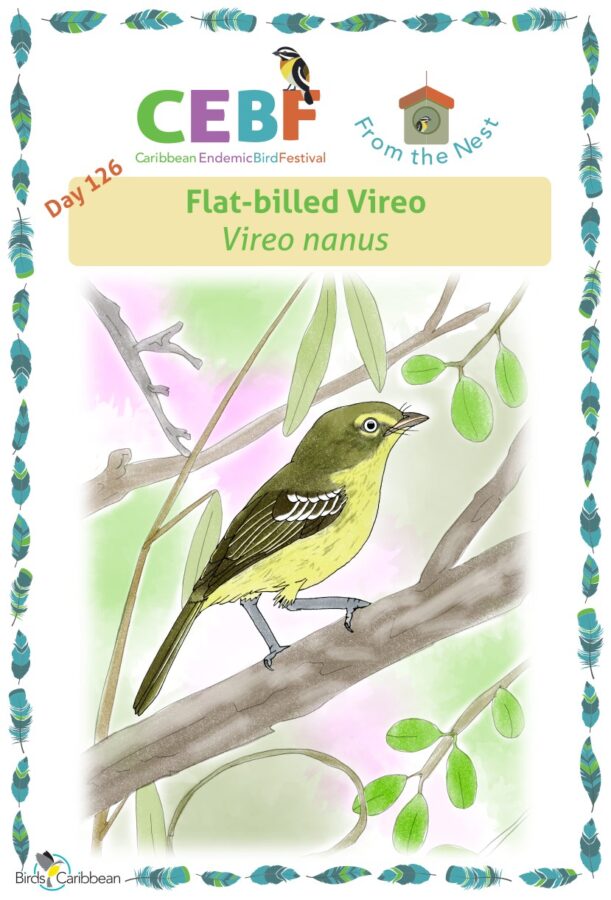
One comment
Comments are closed.